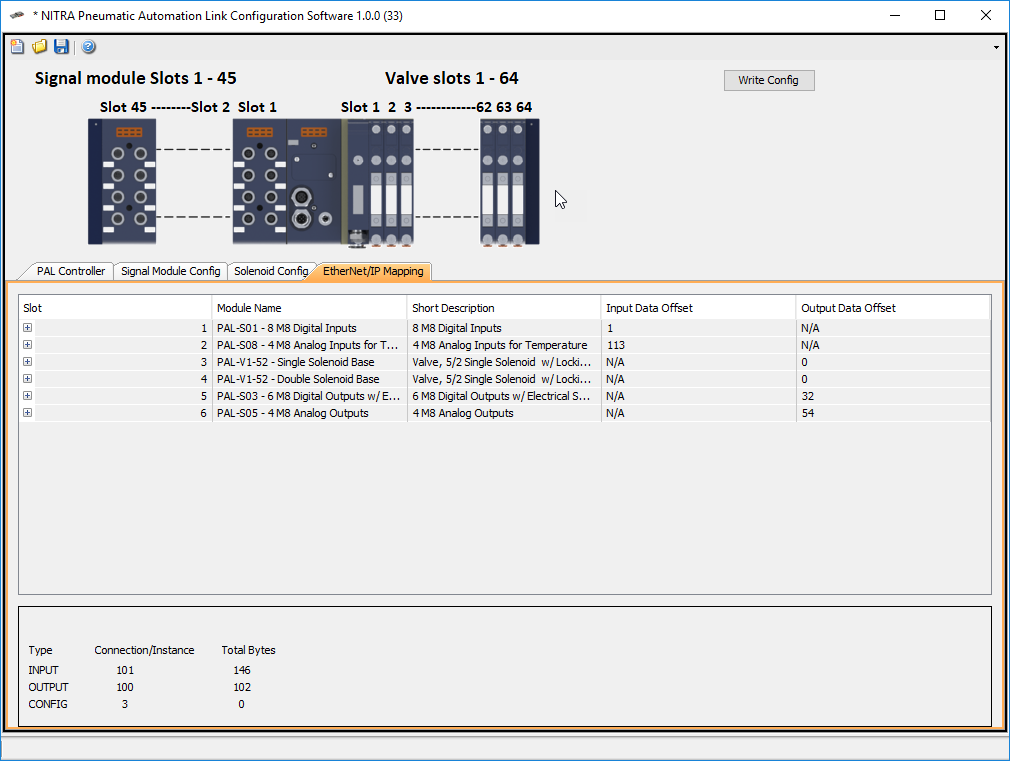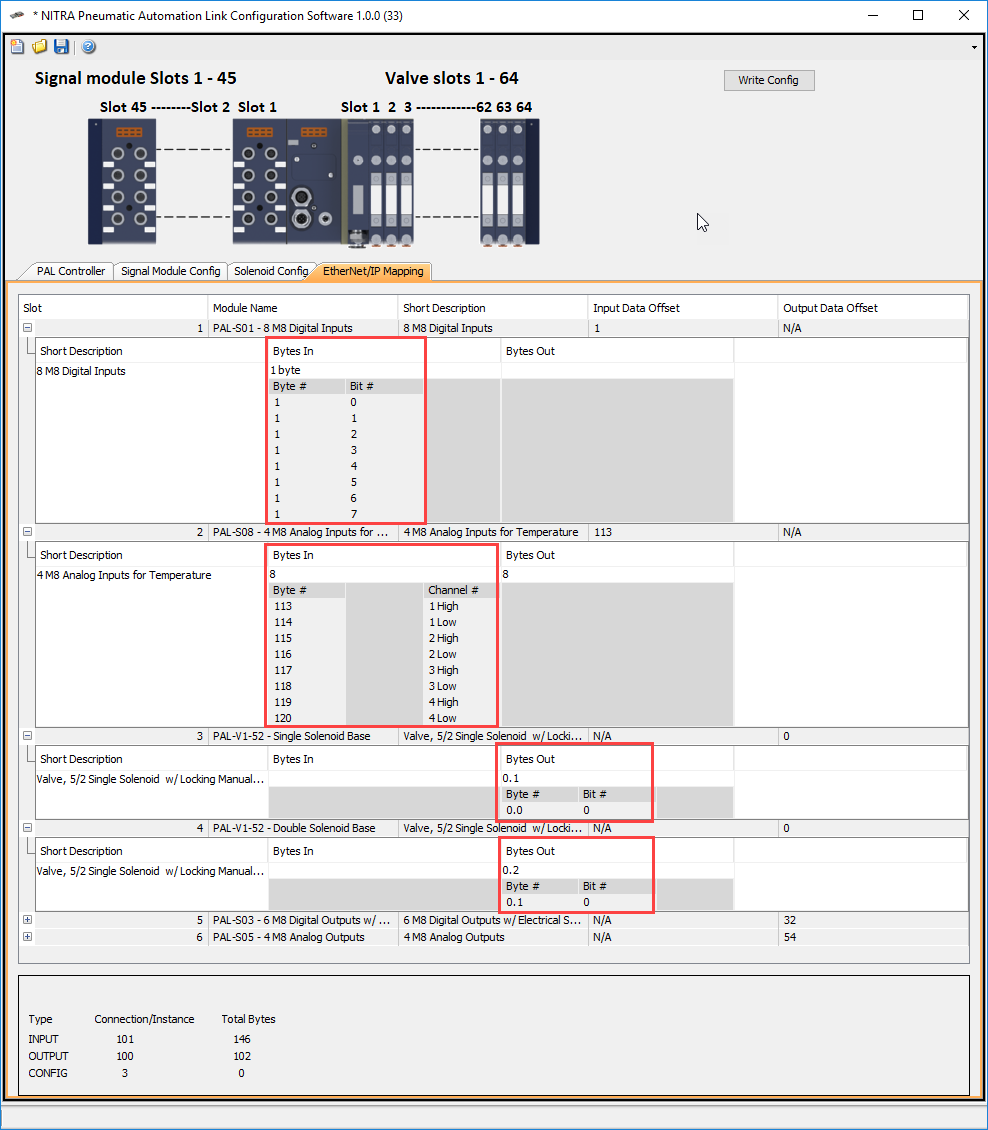Solenoid and I/O Point Calculations |
Topic: PAL021
|
|
The EtherNet/IP Mapping tab shows the calculations within the data blocks for each solenoid and I/O point, eliminating the need to manually determine where the desired data is within the Input and Output data blocks.
Several examples are illustrated in this topic. The I/O data is at fixed locations specific to the type of module and the number of that same type of module.
The Solenoid calculations are a little more complex. The output data is consumed by the type of base being used. A single solenoid base consumes one bit per slot while a double solenoid base consumes two bits per slot even if a single solenoid is being used. Even the Dummy plugs will consume one or two bits, depending upon which type of base is being used.
The examples provided below explain this in more detail.
General Example

When the Mapping tab modules are collapsed (not expanded), you can see where each module's data starts in the larger Input and Output data blocks. These offsets will correspond to the offsets in the EtherNet/IP data mapping tables in the EtherNet/IP section.

As you expand each module, you can see that more detailed information for each bit or channel is displayed depending upon the type of data (Input or Output) and the type of module. The information displayed is:
- Number of bytes consumed by this module.
- Byte offset within the larger Input and Output data block for each bit or channel.
- The bit or channel number within each module.

Solenoid Example

The illustration above and the table below help to explain how solenoids map into the Output data block.
|
Module |
Starting Offset |
Bits Consumed |
|---|---|---|
|
PAL-V1-52: Single Solenoid base |
Byte 0, Bit 0 |
1 |
|
PAL-V1-52: Double Solenoid base |
Byte 0, Bit 1 |
2 |
|
PAL-V0-PLUG: Single Solenoid base |
Byte 0, Bit 3 |
1 |
|
PAL-V0-PLUG: Double Solenoid base |
Byte 0, Bit 4 |
2 |
| PAL-V1-52: Single Solenoid base | Byte 0, Bit 6 | 1 |
As shown in the table and mapping screen above, the solenoid base determines the number of bits consumed, which determines the offset for the module following. Although a PAL-V1-52 is only a single solenoid, the base that it is plugged into determines the output bit consumption. The Dummy plugs have no solenoids, but the base they are plugged into consumes bits. This has the benefit of not requiring programming changes for the EtherNet/IP Scanner if actual solenoids are added in the future.
